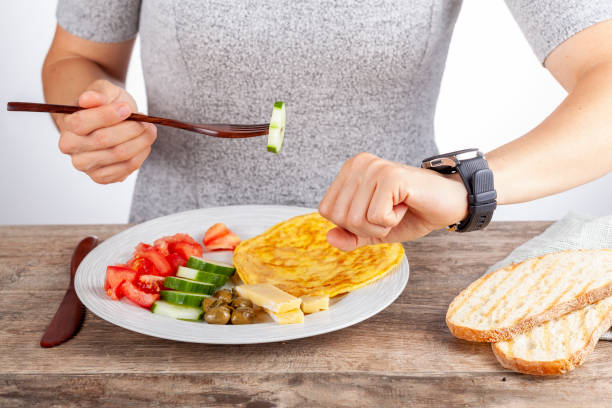
Transitioning To Keto: Tips For A Smooth Start
Thinking about going keto but unsure where to start? The process of figuring out How to Transition Into Keto Diet can feel like you’re entering a foreign land where bread is banned, and avocados reign supreme. Fear not! While the keto diet might sound extreme, transitioning doesn’t have to be painful. With a little preparation and some laughs along the way, you’ll be cruising into ketosis like a pro.
In this post, we’ll break down How to Transition Into Keto Diet step by step. You’ll learn what to eat, what to avoid, and how to dodge the dreaded keto flu (yes, that’s a thing). Let’s make keto fun, sustainable, and, most importantly, delicious!
1. Start Slow: The First Step on How to Transition Into Keto Diet
If you think you can jump straight from carb-loaded pizzas to bacon-wrapped avocados overnight, think again. One of the best tips on How to Transition Into Keto Diet is to take it slow.
Why Ease Into It?
Going from a high-carb to a low-carb diet can shock your body, leaving you feeling tired, cranky, and ready to dive headfirst into a loaf of bread. Start by gradually reducing your carb intake over a week or two. This gives your body time to adjust and makes the transition smoother.
Action Steps:
- Begin by cutting out sugary snacks, sodas, and processed foods.
- Replace starchy sides like rice and pasta with low-carb veggies (think cauliflower, spinach, and zucchini).
- Slowly increase your intake of healthy fats like avocados, olive oil, and nuts.
By easing into keto, you’ll avoid shocking your system and set yourself up for long-term success.
2. Clean Out Your Pantry: A Crucial Step on How to Transition Into Keto Diet
Let’s be honest: temptation is real. If you have chips, cookies, and pasta staring at you every time you open the pantry, sticking to keto will feel like a battle. That’s why cleaning out your kitchen is a must when figuring out How to Transition Into Keto Diet.
Out With the Old, In With the Keto:
- Say Goodbye To: Sugary snacks, breads, pastas, cereals, and high-carb fruits like bananas.
- Stock Up On: Healthy fats (butter, olive oil, avocados), proteins (meat, eggs, fish), and low-carb veggies (broccoli, cauliflower, leafy greens).
- Snack Alternatives: Replace chips with nuts, and candy with keto-friendly fat bombs.
Creating a keto-friendly environment makes it easier to stay on track and avoid those sneaky carbs.
3. Understand Macros: The Foundation of How to Transition Into Keto Diet
If you’re new to keto, the term “macros” might sound like something from a science textbook. But don’t worry—it’s actually pretty simple. Understanding macros is critical when learning How to Transition Into Keto Diet because keto is all about balancing your fats, proteins, and carbs.
The Keto Macro Breakdown:
- 70-80% Fat: Your main source of energy. Think avocados, butter, olive oil, and fatty meats.
- 10-20% Protein: Moderate protein intake to maintain muscle. Focus on eggs, fish, poultry, and beef.
- 5-10% Carbs: Keep carbs low—under 50 grams a day. This means saying goodbye to bread and hello to veggies.
Track Your Progress:
Use apps like MyFitnessPal or Carb Manager to track your macros and ensure you’re hitting the right balance. Trust us, hitting your macro goals is half the battle won.
4. Beat the Keto Flu: How to Transition Into Keto Diet Without Feeling Awful
One of the biggest roadblocks people face when learning How to Transition Into Keto Diet is the dreaded keto flu. It sounds scary, but it’s really just your body adjusting to burning fat instead of carbs. Symptoms include fatigue, headaches, irritability, and muscle cramps.
Why Does It Happen?
When you cut carbs, your body loses water and electrolytes. Without replenishing these, you can feel pretty miserable.
How to Avoid It:
- Stay Hydrated: Drink plenty of water throughout the day.
- Replenish Electrolytes: Add more salt to your meals and eat potassium-rich foods like spinach and avocados.
- Get Enough Fat: Don’t skimp on healthy fats—they’re your new energy source.
- Take It Easy: Don’t push yourself too hard during workouts when you’re adjusting.
Beating the keto flu is all about preparation. Once you push through it, you’ll feel energized, focused, and unstoppable.

5. Plan Your Meals: The Final Step on How to Transition Into Keto Diet
Meal planning might not sound glamorous, but it’s a game-changer for anyone wondering How to Transition Into Keto Diet. Having a plan ensures you always have keto-friendly meals ready to go, so you’re never tempted to grab a high-carb snack out of desperation.
Simple Meal Prep Tips:
- Batch Cooking: Make large portions of keto-friendly meals like soups, casseroles, and grilled meats to save time.
- Quick Breakfasts: Eggs, bacon, and avocado make the perfect morning combo.
- Snack Smarter: Stock up on nuts, cheese, and keto fat bombs for easy, on-the-go options.
- Dinner Ideas: Try recipes like zucchini noodles with Alfredo sauce, bunless burgers, or salmon with asparagus.
Pro Tip:
Keep a list of your favorite keto recipes handy, and rotate through them each week to keep meals exciting.
Conclusion: Master How to Transition Into Keto Diet With Ease
Learning How to Transition Into Keto Diet doesn’t have to be overwhelming. By starting slow, cleaning out your pantry, understanding your macros, avoiding the keto flu, and planning your meals, you’ll set yourself up for success.
Keto is more than just a diet—it’s a lifestyle that can transform your energy, health, and waistline. And for the best tips, recipes, and resources on keto, visit Keto Sensation. We’re here to guide you every step of the way.
Have you started your keto journey? What helped you transition smoothly? Share your tips, questions, or funny keto stories in the comments below—we’d love to hear from you!